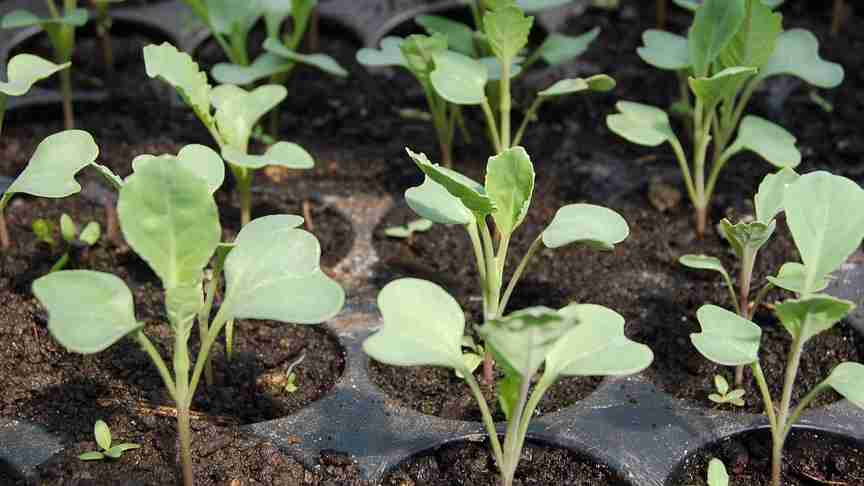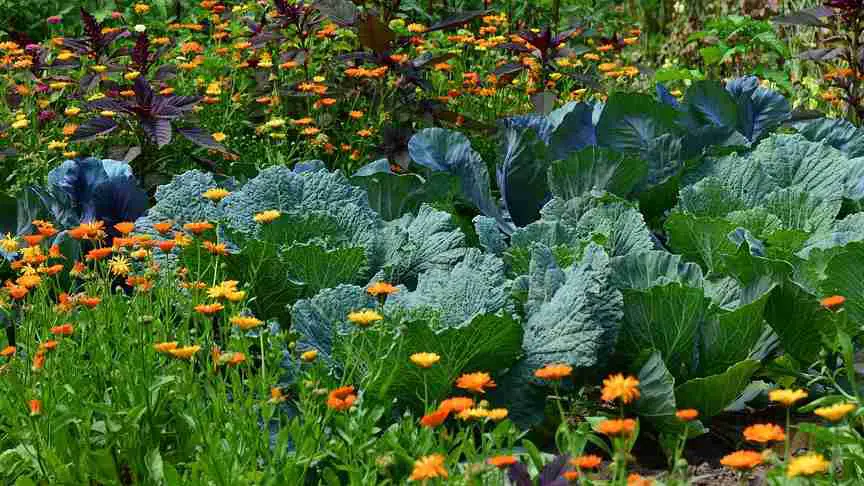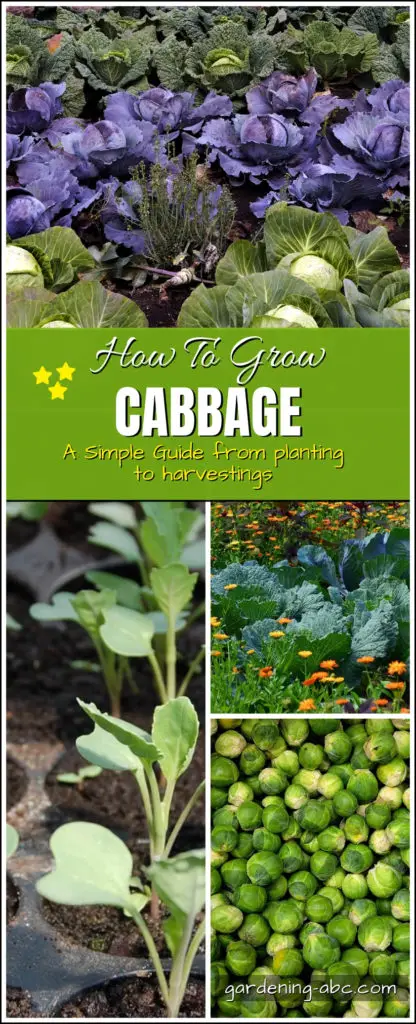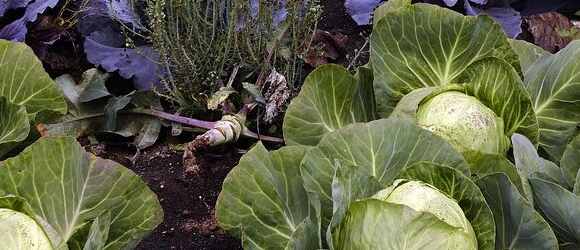We use affiliate links to run our site. When you buy through links on our site, we may earn an affiliate commission, without any added cost to you. Learn more
If you’re anything like me, you love the satisfaction of growing your own food. There’s nothing like going out to the garden and picking fresh produce that you know is healthy and pesticide-free. The problem is, sometimes it seems like our gardening efforts are thwarted by outside forces beyond our control.
Take cabbage, for example. You may have tried to grow cabbage in the past, only to find that your plants were stunted or produced fewer heads than you’d hoped for.
If any of these sounds like you, then this guide is for you! It contains everything you need to know about growing cabbage plants at home.
Once you finished this article you will be in a far better position to grow cabbage at your home and enjoy the endless supply of one of the most popular leafy vegetables in this world.
First things first, Cabbage is not one of the easiest plants to grow. It needs a lot of nutrients, and space and can attract a lot of pests.
But before you totally put off the idea of growing a cabbage plant in your garden, let me tell you this- if you plan properly, take a few precautions, and take
Cabbage is a cool-weather crop that can be a little tricky to grow. But with a little know-how, you can easily grow cabbage at home.
How to Choose The Best Variety of Cabbage Plants for My Garden:
The cabbage plant is generally a cool-weather crop. There are quite a few varieties available in the market viz Green Cabbage, Red Cabbage, Savoy Cabbage, Pointed cabbage, etc., Choose the variety of cabbage wisely and as per your local environment.
For example, if you are in a cooler climate, you can choose a slower maturity variety and can grow huge heads, but if you are in a warmer climate, it is best to go for a fast-maturing variety and grow in the springtime.
The Ideal Soil For Growing Cabbage:
If you want to grow healthy cabbage, it’s important to start with the right soil. The ideal environment for growing cabbage is fertile, well-drained, moist soil with plenty of organic matter.
It has a very shallow root system so don’t till near the plant or you might damage the roots.
Soil pH For Cabbage:
Soil pH affects the availability of nutrients to plants, and cabbage is particularly sensitive to changes in soil pH. An ideal soil pH for cabbage plants is 6.5 to 6.8. A soil pH that is too low or too high can result in nutrient deficiencies, which can lead to stunted growth or poor yields.
So it is crucial that you check your soil pH before planting the cabbage seeds. You can usually find simple soil testers like this online or at your local garden center or nursery. Once you know the pH of your soil, you can make any necessary amendments to achieve the ideal range for cabbage.
If the pH level is lower than the ideal cabbage soil pH level use these steps to increase the pH level. On the other hand, if the pH level is higher than 6.8 you can bring it down by using these steps.
Don’t till near the cabbage plant. Cabbage has a very shallow root system and by tilling you might harm the plant. Click To TweetHow To Plant Cabbage Seeds:

The best way you can grow cabbage is from the seeds. Sow seeds one inch deep into the soil. While planting cabbage,
Generally, you should keep the cabbage spacing approximately 24 to 30 inches between rows, and 18 inches between plants. Another trick in the book is to harvest alternatively to give each plant enough space to grow.
The best time to plant cabbage seeds is at the end of August and S
Fertilizer for Growing Cabbage:
Water regularly. Uneven watering can make the cabbage head crack. Click To TweetAs you may have already experienced, cabbage requires regular feeding and a good amount of sunlight. In the hot
The best fertilizer for cabbage is one that is high in nitrogen and low in phosphorus. This will help to promote the healthy growth of the plant and minimize the possibility of disease.
A good organic fertilizer that meets these criteria is composted chicken manure. A compost made of tea leaves can also be very helpful to the plant. It provides much-needed nitrogen to the plant especially if the cabbage leaves are turning yellow.
Applying mulch and mixing compost with soil can provide the solution. Once the new leaves began to emerge apply fertilizers. Fish emulsion, blood meal, etc., are some of the best fertilizers for cabbage.
How to Water A Cabbage Plant:
Cabbage needs a good amount of water in the soil. For a good cabbage head, maintain a constant level of moisture. Lack of water can result in bitter-tasting cabbages.
Water regularly. Uneven watering can make the cabbage head crack. Don’t forget to read How to give water to the plants before start giving water to the plant.
Cabbage Diseases and Pests Control:
The cabbage plant is very prone to pests and diseases. Some most frequent diseases include club roots, yellow leaves, black rots, etc.
Many insects like cabbage loopers, slugs, aphids, root maggots, etc., love to feast on cabbage plants. One of the prominent signs of a pest attack is holes in the cabbage leaves.
Though the variety of problems and their solutions differs very much, one of the common solutions is to go for companion planting.

If your plants are already attacked by some molds or fungal diseases, it is wiser to remove the plant. Also, crop rotation prevents many pests.
When to Harvest Cabbage:
Once the head becomes big enough you can start checking its firmness with your hand. Cabbage heads are ready to harvest once they start becoming hard. Cut the cabbage head from the stem with a sharp knife.
For the best flavor, eat soon after picking. You can also store the harvested cabbage heads in the refrigerator. Don’t forget to remove the loose leaves prior to storing them. This will allow ample air circulation.
If you use the proper techniques you can store cabbage heads for a very long time in a refrigerator.
Raw and chopped cabbages can provide a great complement to barbecue and seafood. There are so many good recipes involving cabbage present in many cultures. Cabbage is a good source of vitamins A, C, and Iron.
Conclusion:
In conclusion, growing cabbages at home is a fun and rewarding experience. With a little care and attention, you can grow healthy and delicious cabbages that will add a delicious touch to your meals.
What is your experience of growing Cabbage? Do you have any tricks to share? Share your feedback.
Like the post? Don’t forget to PIN IT

Amazon and the Amazon logo are trademarks of Amazon.com, Inc, or its affiliates.


wht is ph balance in soil nd hw to chk.
What a fantastic way to grow cabbage! Truly enjoyed reading this article and I did not know the PH Levels were that important to be honest. Sodding Toronto
The pH is the indicator of the nature of the soil. the lesser the pH of a soil it is more acidic in nature, whereas the more the pH of a soil it is more alkaline. pH level 7 stands for neutral.
You can ask for soil testing by visiting any garden shop near by your house.
Thanks for your tips
Thanks for the article..
For us, cabbage family was a total failure in the garden. The blame clearly lies with because we didn't feed them with adequate nutrients.
We had planted broccoli and Chinese cabbage. Broccoli flowered after sometime, but then the nutrient problem and pest attack happened. In case of cabbage, 6-7 leaves came out and then nothing.
Hoping that next time the cabbage curse will be gone from the garden..
Thus far I haven't had much luck with cabbage, which is unfortunate since I love it so. Glad yours does so well! 🙂
learn a lot from this site, many thanks
Thanks for the entire information you have given here to impart knowledge amongst us?http://www.thetreecenter.com